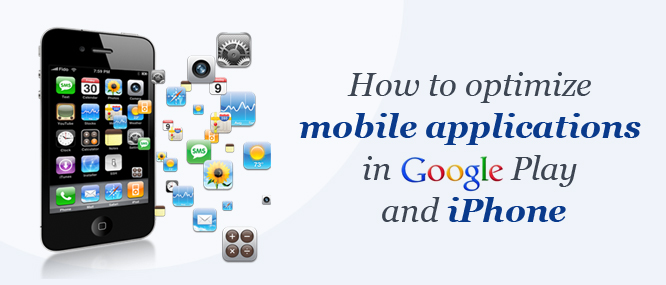
185 billion applications would have been downloaded when 2014 comes to a close. This means that if you're currently developing mobile applications – whether as a tool to build your brand equity or as a source of revenue – there is a sizeable market waiting for you. This also means that there is a shift in focus from developing the best app to making sure that your app appears in app store searches.
Sounds familiar? Similar to the emergence of SEO in the mid-1990s, mobile store optimization is rising fast as a mobile marketing practice. With approximately 700,000 apps available in Google Play and the same number of apps available in Apple App Store, these are saturated markets where apps can easily sink into the background and go unnoticed.
App store optimization can be considered a mobile marketing practice in its infancy stage. Here are a few basic guidelines that can help you ensure that your app gets seen and downloaded by the relevant audience.
What's in a Name?
There are major factors that influence mobile app optimization. These are textual factors, popularity factors and rating factors. How you name or label your app is the first textual factor you need to consider. You app's name is the primary measure of relevance app stores use when someone searches for an app in either Google Play or Apple's App Store. While a catchy name is a must, your app's name should also include a phrase that describes its purpose. For example, "Calorie Buster: Free Calorie Counter for Weight Loss." There are also instances wherein apps are listed alphabetically so you would want to begin with the letter "A" when thinking of a name for your app.
The Name of the App Publisher
Aside from the name of the app itself, the name of the app publisher equally plays an important role in terms of ranking. It is highly encouraged that you include keywords or search terms you would want your app to rank high for in your publisher name. It's also a current best practice to publish your apps under several subdivisions so you can include more keywords.
Great Descriptions to Trigger Downloads
The same SEO principle that good meta descriptions increase click through rate applies in app store optimization. Beyond a good textual description, include visually appealing icons, captivating screenshots and even instructional videos to encourage downloads.
The Number of People Who Installed Your App To-date
Why do you want to increase downloads? Next to textual factors, the next app ranking criteria are measure of popularity. The number of individuals who have downloaded your app so far is a key indication of authority, credibility and trust and these are primary consideration in app store ranking.
Wallflower and Uninstalled Apps
Another reason why you just can launch and leave is the fact that Google Play Store and Apple App Store collate data on the number of people that uninstalled your app and those who are not really using it. You can perform well in app store rankings today, but you can lose this rapidly if these app markets detect a huge increase in uninstallation.
What Users Think About Your App Matters
Lastly, you should pay attention to how users are rating and reviewing your app. Different app markets use the keywords in reviews to rank mobile applications in varying degrees, but what is important is that reviews play a crucial role in terms of influencing users to install your app. Ratings are also important as highly rated apps are usually ranked higher than poorly rated ones.

Like on FB
Follow on Twitter
Follow on Linkedin
Follow on G+